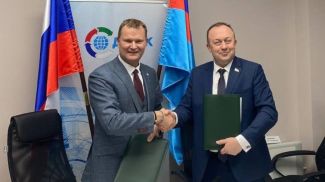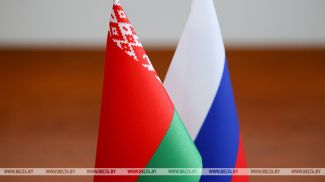MINSK, 30 November (BelTA) - Milk production in Belarus has been growing while the output in a number of countries has been on the downward trend, Maria Klimova, Deputy Head of the Central Office for Processing Industry at the Agriculture and Food Ministry, said in a new episode of the project "After the Fact: Lukashenko 's Decisions” on BelTA's YouTube channel.
"The Belarusian dairy industry has entered the most active phase of development. Its products are in demand in foreign markets," the expert emphasized. She is convinced that the achievements of the domestic dairy industry are a direct consequence of the purposeful policy of the state over the past two decades. "All the measures that were spelled out in the state programs were implemented in a responsible way at all levels, from the Agriculture and Food Ministry to regional administrations, and gave the results," Maria Klimova emphasized. Amid the projected global decline in agricultural production, the production and export in Belarus have been growing.
Maria Klimova recalled that a program for the revival and development of the village was launched in the early 2000s. It helped retain personnel and producers in rural communities. "It was aimed at the development of the raw material base, ramping up the production potential of the agricultural industry, which laid the foundations for the growth of the food industry, including the dairy industry," Maia Klimova added.
That program was followed by the national and sectoral programs to develop the dairy industry. They provided for the modernization and technical re-equipment of enterprises. "At that time, everyone realized the importance of dairy products, their high profitability and export. The old factories, which at that time could not fit any standards or quality systems, were successfully retrofitted,” Maria Klimova recalled. Today, the factories are automated modern complexes with high production standards, operating closed-loop technological processes and quality control systems. Today they manufacture products that are in demand in many countries around the world," she said.
Changes in the standard for the purchase of harvested milk enabled to improve the quality and lineup. In 2015, the industry abandoned second grade milk and introduced the extra variety.
In 2018, Belarus adopted a strategy for the development of the dairy industry which, in addition to qualitative indicators for the raw material base, suggested measures to modernize domestic enterprises. "Small enterprises, which were no longer able to compete in the global dairy market with Danone, Nestle and so on, were incorporated into larger enterprises. Necessary conditions were created to facilitate optimization, efficient processing of raw materials,” the representative of the Agriculture and Food Ministry said.
According to her, the dairy industry development strategy through 2025 was updated, and a corresponding action plan for 2022-2025 was approved in 2022. It defines six main areas, the major among which is the development of raw material base. “If we develop the raw material base, we will provide the factories with milk and high-quality raw materials, secure high export and revenue,” Maria Klimova added.
“This year many countries, especially in Western Europe, have reduced milk production,” she continued. “Belarus, Japan, Russia and Argentina have increased milk output. We are on a positive trend. Milk output in the EU countries, the United States, and New Zealand dropped in January-August 2022. Milk production in New Zealand went down by 5%.”
As the main reason, the expert named the wrong strategic policy of these countries - the measures that they took against other countries eventually boomeranged against them. With a lack of energy resources, fertilizers, and fodder, their food security and agricultural production have come under threat . “When you make decisions against another country, you need to understand how much you depend on it,” Maria Klimova stressed. “It is worth taking advantage of the decline in milk production in a number of countries. This gives an incentive and good opportunities for domestic dairy producers.
The same applies to a number of European countries. While in the European Union in general the level of self-sufficiency in milk is 116%, in a number of its countries it has already declined – by 3% over a year. “What will happen next? Experts believe that things will get even worse. A recession is round the corner. A recession is looming not only over the dairy industry but the entire agricultural sector in Western Europe,” the expert said. Nevertheless, the EU countries keep barriers to Belarusian dairy products in place. There is a customs tariff on the Belarusian products, which makes them uncompetitive in terms of price compared to European ones.











